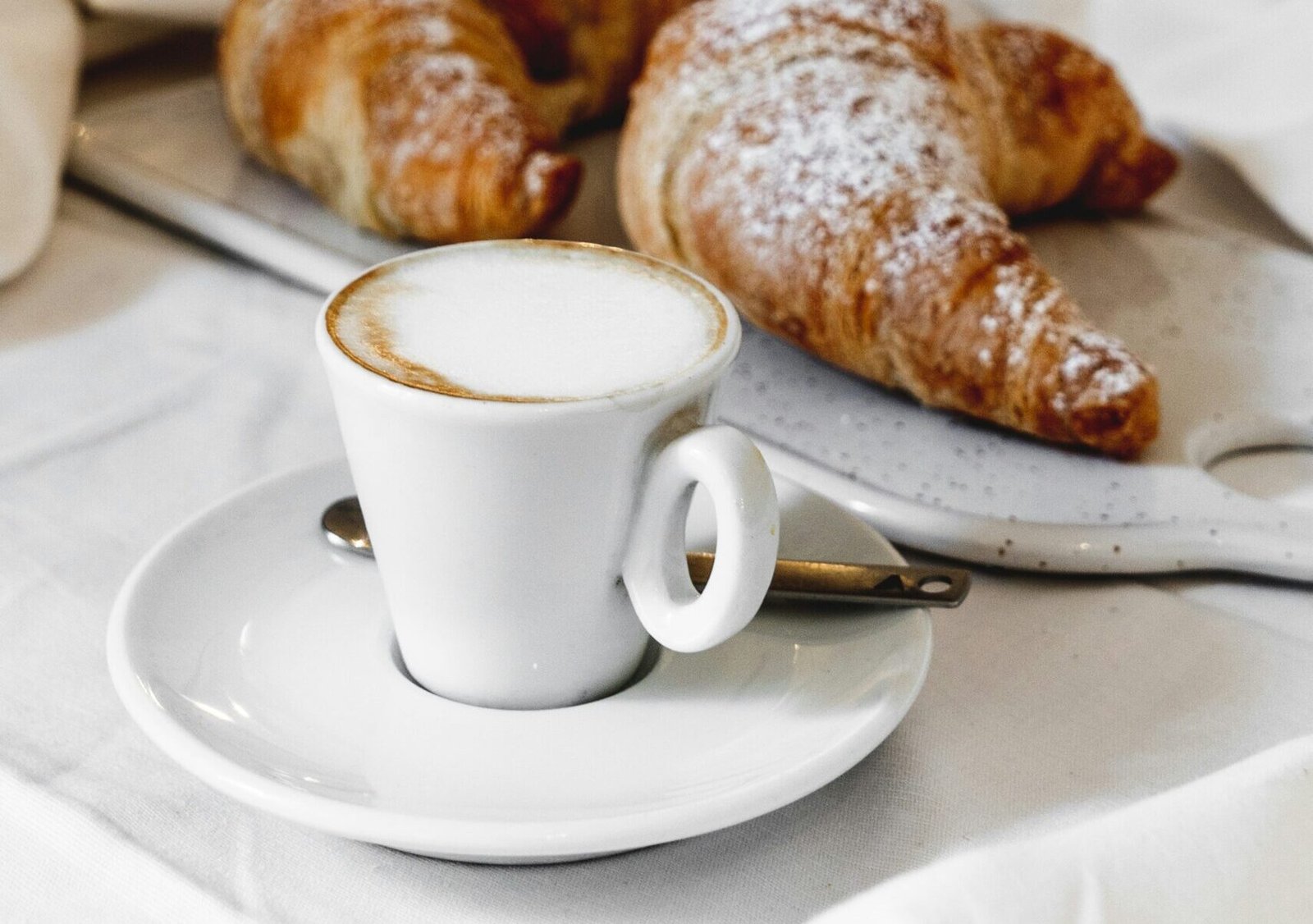If you’re a coffee lover, you’re probably always on the lookout for new and unique flavors to try. While the classic coffee options like cappuccinos and lattes are delicious, sometimes you want something different. That’s where macchiato and latté come in. These two drinks may seem similar at first glance, but they actually have distinct differences that set them apart. In this blog post, we’ll explore the world of macchiato vs latte and discover what makes them unique. Whether you’re seeking a new coffee experience or just curious about the difference between these two popular drinks, read on to find out more.
Table of Contents
What is the origin of macchiato and latte?
The origins of the macchiato and latte can be traced back to Italy, the country known for its rich coffee culture. The term ‘macchiato’ in Italian means ‘stained’ or ‘spotted’, signifying the nature of this coffee drink. A macchiato traditionally is an espresso ‘stained’ with a dollop of frothy milk on top. It was born in Italian cafes as a way for baristas to show the customer that an espresso had a little milk in it.
On the other hand, ‘latte’ in Italian simply means ‘milk’. In the world of coffee, a latte is an espresso-based drink with steamed milk and micro-foam added to it. The concept of a latte is believed to have been created in the 1950s by Lino Meiorin, an Italian barista. He wanted to satisfy the desire of American tourists for more milk in their coffee, thus creating a coffee drink that’s milkier than a cappuccino, hence the birth of the beloved latte.
In essence, the origins of both the macchiato and latte are deeply rooted in the creative efforts of Italian baristas to cater to varying tastes and preferences of coffee enthusiasts.
Exploring the Classic Macchiato
So, what is a macchiato exactly? The espresso is the star of the show in this coffee option, delivering a robust, rich flavor with just a hint of creaminess from the milk.
Unlike other popular coffee drinks, the macchiato is designed to be strong and bold. It’s not about diluting the flavor of the coffee, but rather enhancing it. The drop of milk serves to slightly soften the harshness of the espresso, bringing out its complex flavors and making it more enjoyable to drink.
While there is a clear focus on the coffee in a macchiato, the milk isn’t an afterthought. The frothed milk used in a macchiato is carefully crafted to be creamy and velvety, but not overly thick or heavy. It’s frothed just enough to create a small amount of foam, but not so much that it overpowers the espresso.
To put it simply, a macchiato is a harmonious balance between the robust espresso and the small touch of milk. Its simplicity is its strength, allowing the individual flavors to shine through. It’s an excellent choice for those who enjoy the rich, bold taste of espresso, but desire a little bit of creaminess to round out the flavor.
The Creamy Comfort of a Latte
So, what is a latte? A latte is a perfect blend of espresso and steamed milk. It consists of one-third espresso, two-thirds heated milk, and a small layer of frothed milk on top. This proportion allows the bold flavors of espresso to harmonize with the comforting creaminess of milk, creating a full-bodied yet mild coffee experience.
While the espresso delivers the caffeine kick, it’s the abundant addition of milk that softens the coffee, providing a smooth, creamy texture that’s both satisfying and comforting. Moreover, the latte’s signature frothy top gives it an extra touch of elegance and opens up the possibility for creative latte art.
For coffee lovers who enjoy milder flavors and appreciate the comforting feel of a creamy coffee, the latte offers a delightful and soothing escape. The latte’s versatility also shines through, as it can be customized with various flavors and syrups to cater to a wide range of taste preferences. Its creamy comfort truly makes the latte a favorite among many coffee enthusiasts.
Textural Differences between Macchiato vs Latte
When comparing macchiato vs latte, one of the most striking differences lies in their texture.
A macchiato, with its espresso focus and just a dash of froth, offers a thicker, bolder texture. The minimal amount of milk added is delicately frothed to perfection, creating a small but significant layer of creaminess that complements the strong espresso.
On the flip side, a latte provides a creamier, smoother, and more velvety texture. The ample amount of steamed milk that blends with the espresso forms the basis of this texture. The milk not only softens the boldness of the espresso but also adds a gentle, comforting creaminess that defines the latte’s mouthfeel.
Despite the fact that both drinks have distinctive textures, it’s important to keep in mind that other factors, such as the quality of the coffee beans, the size of the grind, and the barista’s expertise, can also affect texture.
Thus, while the basic textural profiles remain the same, each macchiato and latte you enjoy can bring its own unique textural experience.
Choosing the Perfect Macchiato or Latte for Your Taste Buds
When it comes to choosing between a macchiato and a latte, your personal taste is the deciding factor.
If you appreciate the strong, rich flavors of espresso with just a hint of milk for a smoother drinking experience, a macchiato is the way to go. It’s the ideal choice for espresso lovers who desire a bit of creaminess without overshadowing the bold coffee flavors.
On the other hand, if you love the comforting creaminess of milky coffee, the latte is your best bet. Its smooth and velvety texture, blended with the robustness of espresso, offers a harmonious balance of flavors. The latte’s versatility also allows for the addition of various syrups and flavors to cater to your unique taste preferences.
In essence, whether you go for a macchiato or latte depends largely on your coffee and milk ratio preferences. Experiment with both and let your taste buds guide your choice.
Sipping Macchiato vs Latte Around the World
The global coffee culture has embraced both the macchiato and the latte, yet they’re enjoyed differently across regions.
In Italy, where these drinks originated, the macchiato is enjoyed as a quick, strong espresso hit with a touch of milk, usually consumed in the morning or after meals. The latte, being a milder, milkier drink, is a popular breakfast choice, often paired with a pastry.
Since moving to the U.S., both drinks have evolved, with macchiatos often being served iced or flavored with caramel. Lattes, meanwhile, have become an all-day staple, customizable with numerous flavors, from vanilla to pumpkin spice.
In Australia, the “flat white,” a variation of the latte with less milk and foam, reigns supreme. In contrast, Scandinavian countries, known for their love of strong coffee, have a fondness for the bold, straightforward macchiato.
So whether you’re savoring a traditional Italian macchiato in a bustling cafe in Rome, sipping an iced caramel macchiato in a hip New York coffee shop, or enjoying a spicy chai latte in a cozy Melbourne café, remember that the beauty of coffee culture lies in its diversity and adaptability.
Expert Barista Tips for the Perfect Macchiato and Latte
Making the perfect macchiato or latte starts with selecting quality beans for your espresso base.
For a macchiato, use a high-quality espresso blend with a bold, rich flavor. As the espresso dominates the drink, its quality greatly influences the overall taste.
For the latte, a medium roast usually works best to balance out the abundant milk. Always grind your coffee beans just before brewing to ensure the freshest taste. When frothing the milk, aim for a creamy and velvety texture.
For a macchiato, remember to froth just enough to create a small amount of foam without overpowering the espresso. In contrast, for a latte, more milk is used, so focus on achieving a creamier texture.
Finally, be mindful of proportions – a macchiato is predominantly espresso with a spot of milk, while a latte is espresso harmoniously blended with a generous amount of milk.
These tips highlight the differences between preparing a macchiato vs latte, showcasing the unique methods involved in creating these two popular coffee drinks.

